Trail Benefits
Trails, greenways and blueways provide innumerable benefits to our communities and enrich our lives in many ways.
Here you can learn about various studies that have shown significant health, environmental, economic and social benefits from having publicly accessible green spaces in our daily lives.
Most recently in 2022 the Institute of Transportation Research and Education (ITRE) at NC State University completed an economic impact assessment of six trails or greenways within the Carolina Thread Trail network. The study calculated substantial dollar values for annual trail benefits reflected in the economy, healthcare savings, carbon storage and sequestration, and emissions reductions.
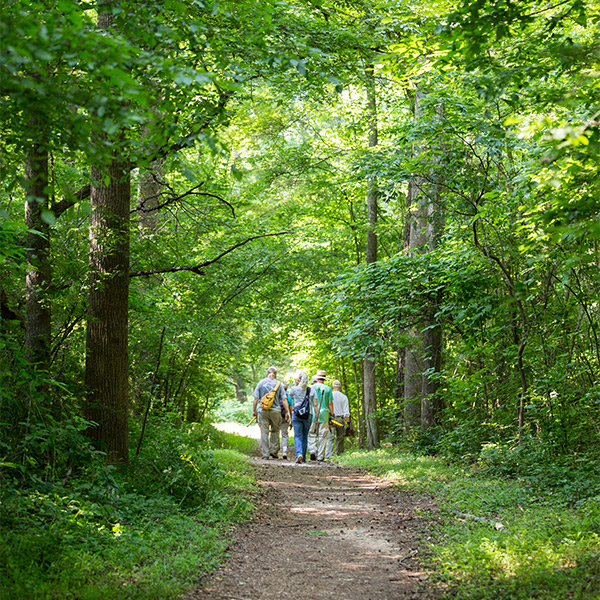
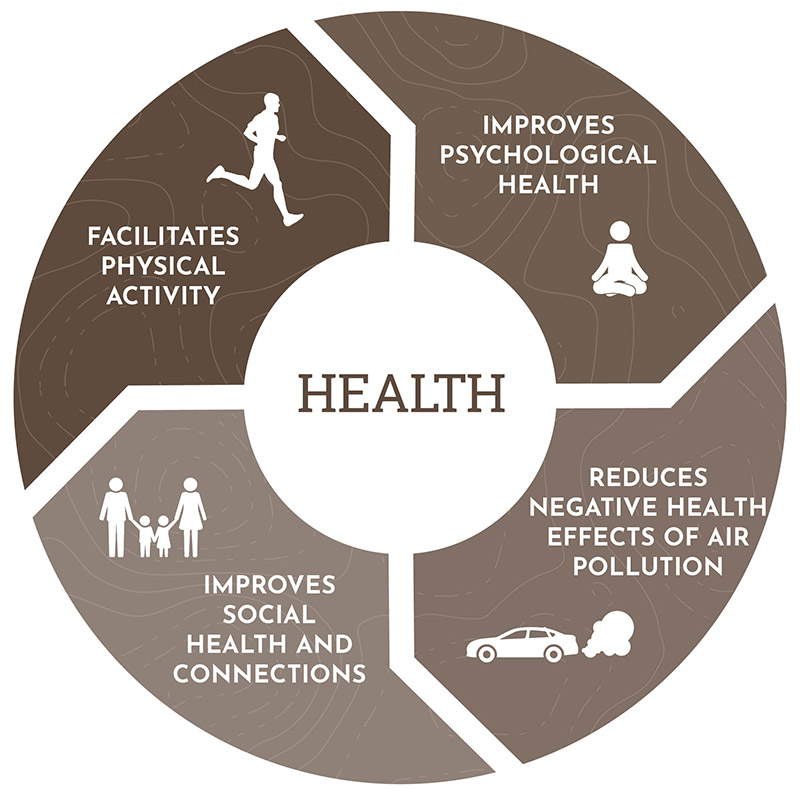
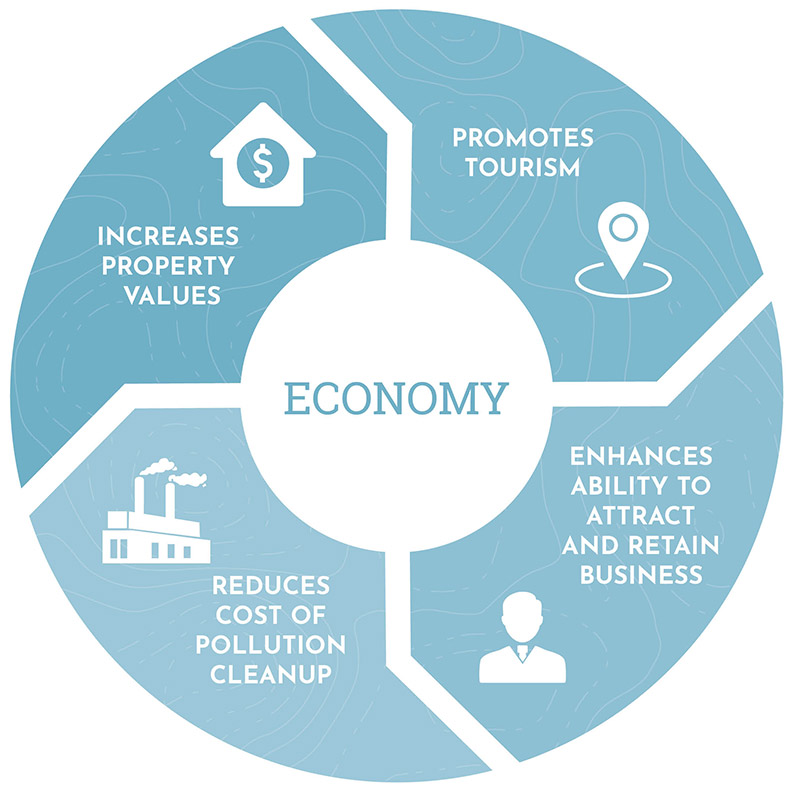
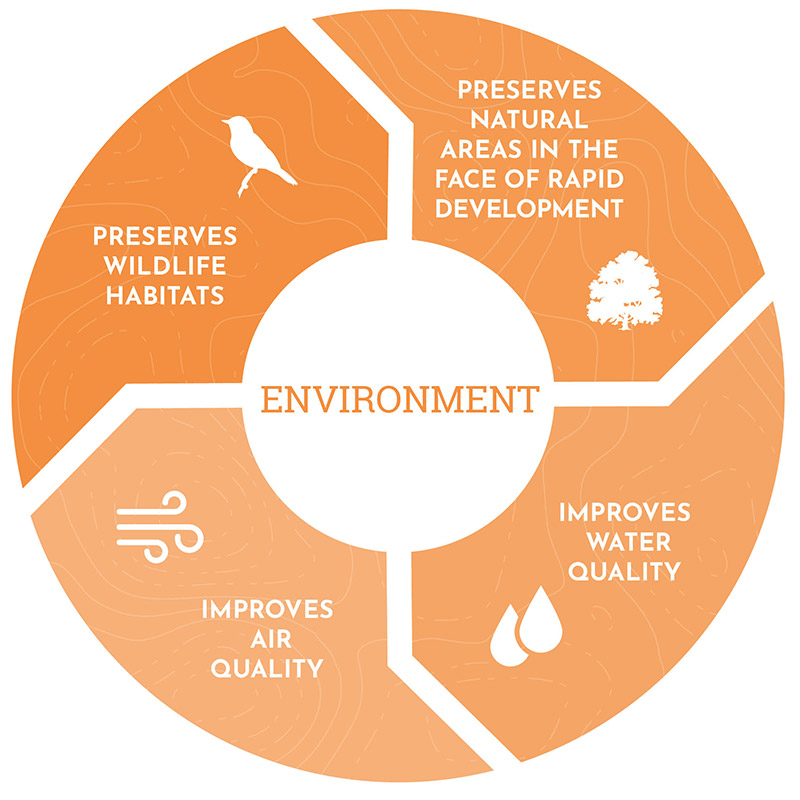
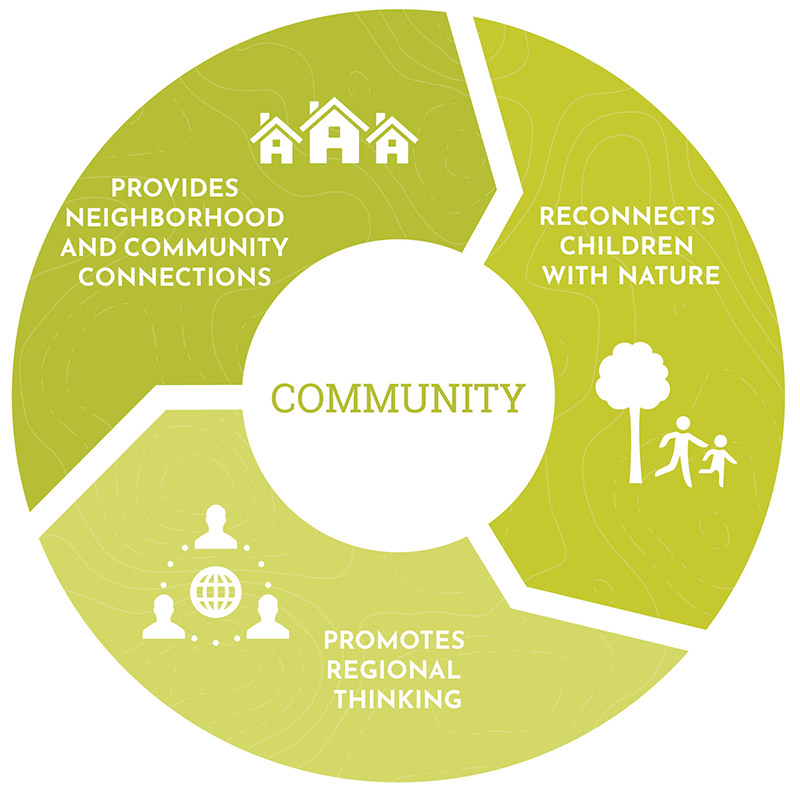
Facilitate Physical Activity
A landmark report by the U.S. Surgeon General found that “Americans can substantially improve their health and quality of life by including moderate amounts of physical activity in their daily lives.” It also found that “health benefits appear to be proportional to the amount of activity; thus, every increase in activity adds some benefit.”
The American Academy of Pediatrics released a report highlighting the impact of inactivity on the alarming increase of overweight children. The report underscores the importance of creating our communities in a way that children will engage in physical activity as a part of their daily lives
“The Built Environment: Designing Communities to Promote Physical Activity in Children.”
Improve Psychological Health
A growing body of research suggests that mere contact with the natural world improves psychological health. Green settings have been shown to relieve feelings of anxiety and improve our ability to cope with stressful situations. In some cases, natural spaces provide therapy for conditions such as Attention Deficit Disorder and improve cognitive function and work performance. In addition, greenways, trails and parks provide safe places for kids to play, which is vital in brain development in young children.
Reduce Negative Health Effects Associated with Air Pollution
Greenways and trails serve as highways for alternative means of transportation. Therefore, automobiles are used less frequently, resulting in lower overall carbon dioxide levels. Additionally, increased tree density along these greenways mitigates air pollution by filtering pollutants out of the air, decreasing the number of respiratory illnesses experienced by many people.
Improve the Social Health of Communities
As a free, accessible community asset, the Thread Trail offers opportunities for recreation and exercise to everyone, including children, youth and families who might not be able to afford them elsewhere. Trails also provide a safe place for people to experience a sense of community and create stronger social and familial ties.
Decrease Frequency of Automobile Accidents
Greenways and trails also provide safe routes for pedestrians and bicyclists to travel. This separation from traffic can reduce the number of vehicle-pedestrian and vehicle-bicyclist related accidents.
Article: “Take a hike and call me in the morning,” The Washington Post
The 2008 Scottish Health Survey found that anything from a stroll in the park to a run through woodland can have a positive effect on people suffering from depression and anxiety. The study also showed that the positive effect on people’s mental health was 50 percent more than they might expect from going to the gym
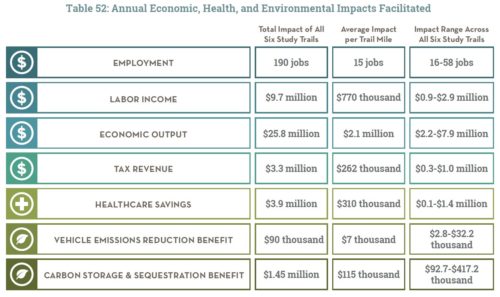
Increased Property Values
Homes in the affected area of the Carolina Thread Trail have increased in property value.
Outdoor Recreation Facilities Attract Tourists
The trail not only brings new visitors and tourists to the region and injects new dollars into the local economy, but also promotes connectivity between tourist destinations for visitors, as well as local residents.
Economic Benefits from Investment in Trail Construction
The cost to complete the Thread Trail will exceed $300 million. Already, this investment has generated significant economic benefits, including jobs for the local communities and enhanced real estate values across the region.
Enhanced Ability to Attract and Retain Business
Information from industry professionals and site selection firms supports the significance of greenspace and trails for business development and attraction. The trail creates a strong draw for young professionals choosing to reside in or relocate to the area.
Less Costly Cleanup of Polluted Water and Air
Reduced runoff associated with the greenway landscapes of the trail mitigates storm water management and treatment concerns. Additionally, the associated tree cover within the greenway contributes significantly to the air quality by removing tons of particulate matter per year. Encouraging and implementing these natural enhancements results in less costly cleanup of polluted water and helps reduce health costs from respiratory illnesses associated with air pollution.
Other Economic Impact Studies
Preservation of Natural Areas in the Face of Rapid Development
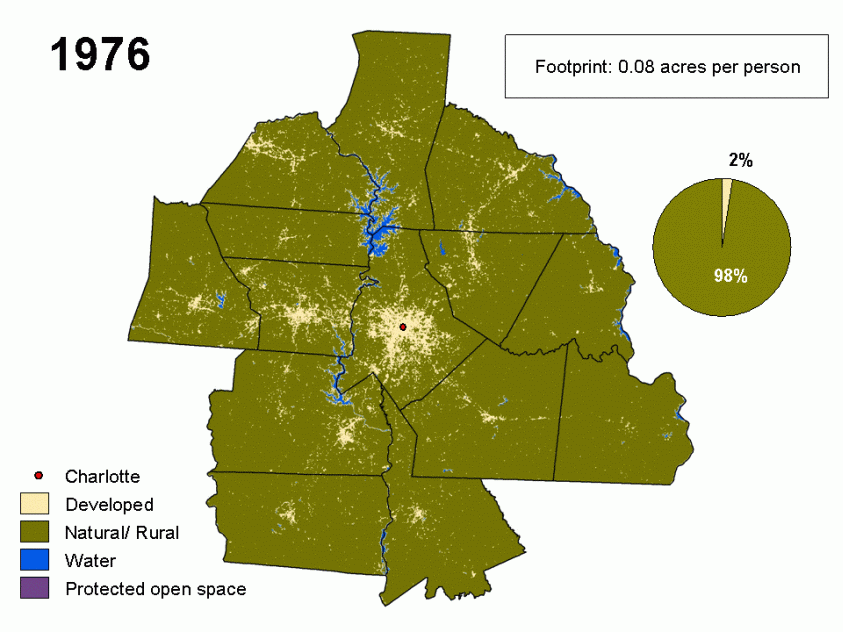
Improvement of Water Quality
Green space created by these natural corridors helps to mitigate storm-water runoff and encourage water table recharge. It also serves as a natural filter, trapping pollutants from urban runoff, eroding areas and agricultural lands in order to keep our water supplies healthy.
Improvement of Air Quality
Tree cover provided by trails contributes to air quality by removing substantial amounts of particulate matter and carbon dioxide from the atmosphere. Trails also encourage non-motorized means of transportation, which significantly reduce air pollutants. According to the North Carolina Public Interest Research Group’s (NCPIRG) Rob Thompson, “improving air quality is particularly important because communities across North Carolina are routinely put at risk by toxic pollution linked to serious health problems. These toxic pollutants are the worst of the worst and pose tangible threats to public health that must be addressed.”
Preservation of Wildlife Habitat
Greenways, trails and conservation corridors help to preserve habitat for many plants, insects and animals that are so important and unique to this region. Conserving the natural environment that surrounds us is an important piece of the legacy that we will leave behind for our children, grandchildren and great-grandchildren.
Provide Neighborhood and Community Connections
The Thread Trail provides connections from the greenway for adjoining neighborhoods and social centers such as schools, churches, and other community facilities. It helps to reinforce the identity of neighborhoods through greenway design by incorporating public art, recognizing local history and creating landmark open spaces.
Reconnect the Children of our Community with Nature
So many of our children rely on indoor activities such as video games, television and the Internet for entertainment. By preserving green spaces from development, the Thread Trail provides safe places for our children to play outside and connect to the natural world.
Promote Regional Thinking
As a tangible project that links people and places, the Thread Trail encourages communities, leaders and municipalities to build partnerships. It provides a framework and “pathway” for future regional initiatives and encourages communities to act locally while thinking regionally.
